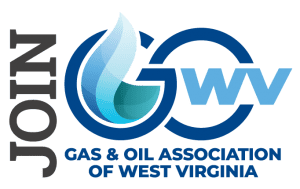CHARLESTON, WV (AP) –
West Virginia has brought in $18 million by leasing the right to drill for oil and natural gas deep below state wildlife management areas and waterways, including beneath the Ohio River.
But as natural gas prices stay low, no companies with the state leases have begun extracting gas, as far as state Department of Commerce officials know. As a result, officials say they have received up-front checks, but no royalties from the unearthing of resources from the deep shale deposits, a process generally known as hydraulic fracturing, or fracking.
The department first put horizontal drilling opportunities out to bid in the fall of 2014 and has since struck leases in the northern counties of Marshall, Tyler and Wetzel. They include parts of wildlife management areas at Conaway Run Lake, The Jug, Underwood, Burches Run Lake and Lewis Wetzel; Fish Creek and Middle Island Creek; and a few miles of the Ohio River.
Given the uncertainty about natural gas prices, West Virginia Commerce Secretary Keith Burdette said the state is treating the leases as one-time cash that will bolster the parks system and wildlife programs, hopefully creating more revenue sources through the improvements.
Under state and federal requirements, about $5.4 million has to be doled out to state Division of Natural Resources projects, and $12.6 million must go back into wildlife management.
Burdette said the state plans to spend a few million dollars to renovate 34 cabins, including adding heat and air conditioning to some cabins that aren’t currently year-round rentals. Officials also will add 10 picnic shelters across the park system and upgrade some campground sites with electric hookups, bigger parking areas and water and wastewater system repairs. Burdette said a spray park designed for toddlers is also in the plans, likely at Chief Logan State Park.
With the wildlife area money, Burdette said the state wants to fix lingering issues with fishing dams and add recreational offerings at state parks, including handicap-accessible lake docks.
“It really is about money,” Burdette said. “It’s about how we create self-sustainability.”
The leasing contracts charge an additional 20 percent royalty on what the companies extract, a source of revenue that won’t come through for the cash-strapped state until companies decide the market and other variables are right.
Representatives from several companies — including Statoil USA Onshore Properties, which spent $4.1 million up front for two Ohio River leases — said they weren’t sure when they would begin drilling under the state lands. The leases prohibit companies from drilling on state property, and many state lands fit in like puzzle pieces with other tracts the companies already have paid for.
It’s too soon to say if Statoil will drill under state lands this year, said company spokesman Peter Symons.
Burdette said the state will yield a better return if prices recover first, anyway.
“It may be a year or two, but it will rebound,” Burdette said. “It’s not as if we’re pressed on this.”

